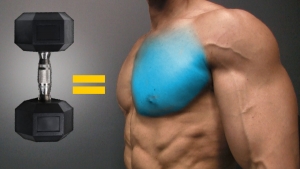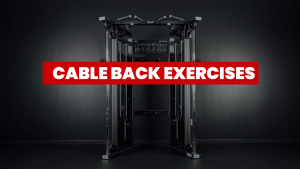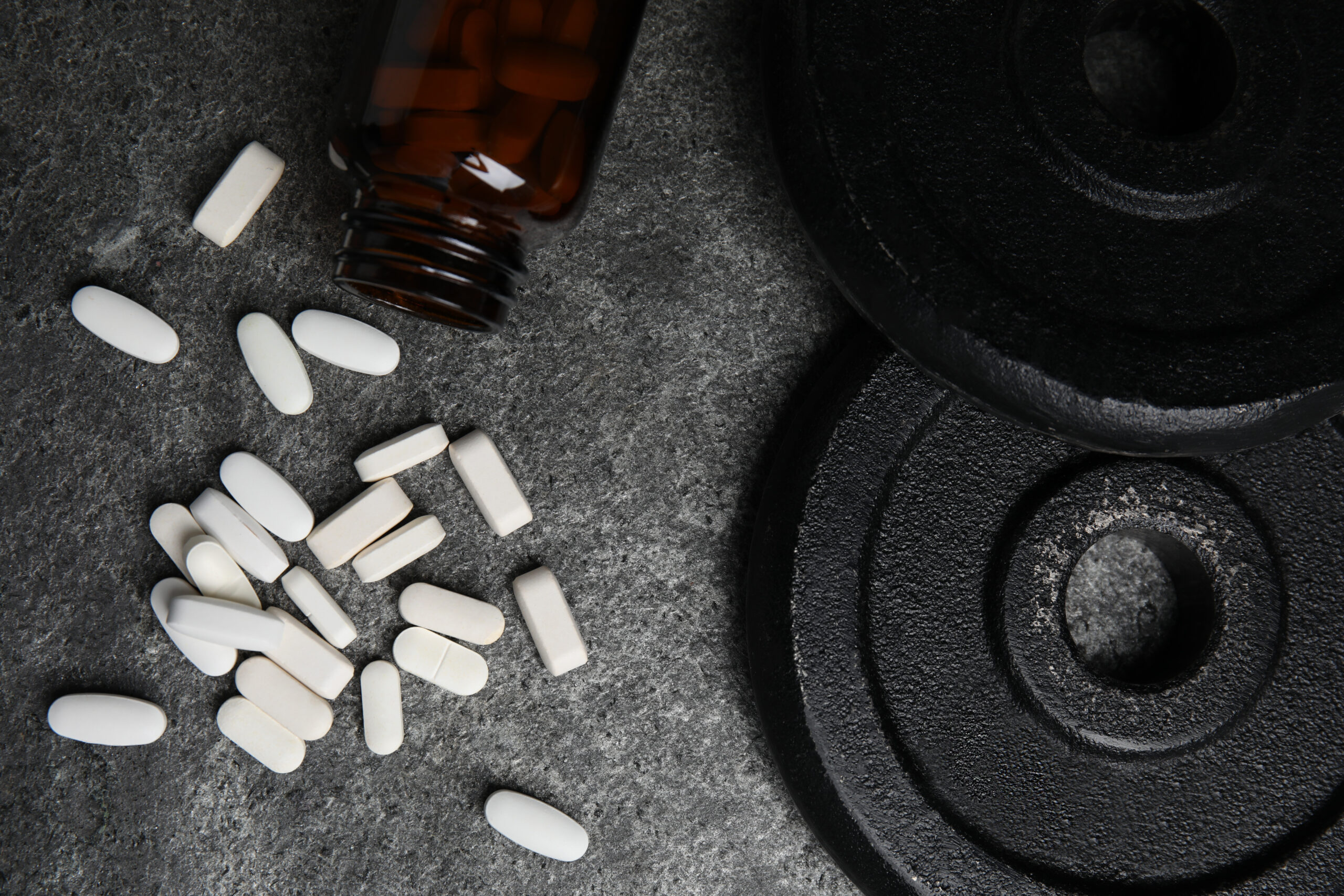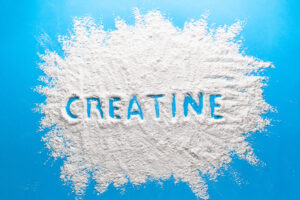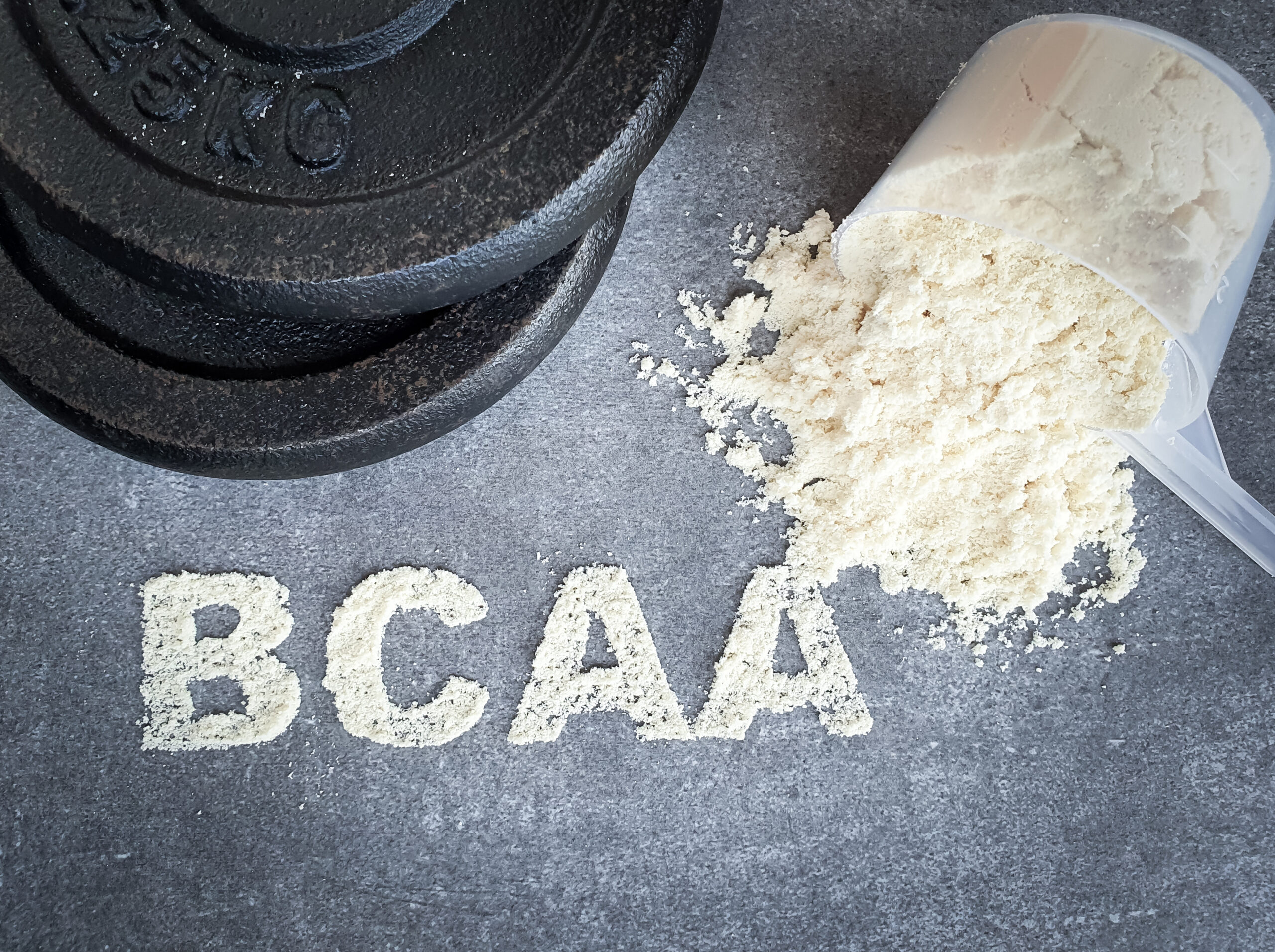
WHY ARE BCAAS IMPORTANT?
The big question: does a branched-chain amino acids supplement help your gains or does it just drain your wallet?
Studies have shown that BCAAs fuel protein synthesis, reduce muscle breakdown, and speed up recovery after resistance training.
While they might be backed by research, that doesn’t mean everyone needs them. And they certainly shouldn’t replace real protein from whole food sources like chicken breast.
So, it’s not about if branched-chain amino acid supplements work. It’s really about whether they will work for you and your specific fitness goals.
And that’s exactly what I’ll answer for you.
This guide breaks down what BCAAs do inside your body, how they help with specific fitness goals, who should be using them, and how to take them correctly.
Let’s clear up the confusion and make sure you’re not wasting your time.
Here’s what I’ll be covering in this complete BCAA guide:
WHAT ARE BCAAS?
Short for branched-chain amino acids, BCAAs are made up of three specific essential amino acids: leucine, isoleucine, and valine.
They’re considered “essential” because your body can’t make them on its own. You have to get them from dietary sources like protein-rich foods (e.g., chicken breast, ground beef, dairy products) or through dietary supplements like protein powder or BCAA supplements.
Branched chain amino acids are unique because these three amino acids make up about a third of the total aminos found in your muscle tissue.
But what really sets them apart is where they’re broken down.
While most amino acids are processed in the liver, BCAAs are primarily metabolized in the muscles themselves, a process known as BCAA catabolism.
This unique pathway links BCAAs directly to muscle metabolism and protein turnover, making them especially helpful for anyone doing regular resistance training and high-intensity workouts.
Let’s take a closer look at each one:
LEUCINE
Leucine is the most talked-about of the three and for good reason.
It’s the primary driver of muscle protein synthesis, thanks to how it activates the mTOR pathway, a key switch in the muscle-building process.
It also has a unique shape that helps it send important signals inside your cells, especially when it comes to building muscle.
But leucine can’t do it all on its own. It needs the support of isoleucine and valine to function properly, which is why going all-in on leucine alone doesn’t cut it.
ISOLEUCINE
Isoleucine doesn’t get as much attention, but it should. It plays an important role in glucose uptake and energy regulation, helping fuel your workouts from the inside out.
It’s especially active during prolonged or high-intensity training and supports hemoglobin production and blood sugar stability.
Think of it as the steady workhorse that keeps your energy systems running smoothly while your muscles are under stress.
VALINE
Valine might not be as well-known as leucine, but it’s essential for muscle repair and protein metabolism.
It helps maintain nitrogen balance, which is crucial when your muscles are in breakdown mode after training.
Valine also plays a role in reducing central fatigue, helping you stay mentally locked in during longer or more grueling sessions.
TYPES OF BCAAS
Not all BCAA supplements are created equal. Between flashy ratios and nutrition jargon, it’s easy to get lost in the noise.
Let’s make it simple.
There are three key things that matter when it comes to BCAA supplements: the ratio of amino acids, the source (natural or synthetic), and the form (powder, capsule, or drink).
Each of these can impact how well the supplement works for you, depending on your fitness goals.
BCAA RATIOS
There are three common BCAA ratios that you’ll see on most supplements: 2:1:1, 4:1:1, and 8:1:1.
These ratios refer to the amount of leucine, isoleucine, and valine in the formula.
For example, a 2:1:1 ratio means you’re getting two parts leucine for every one part isoleucine and one part valine.
Why does this matter?
Because leucine is the BCAA most involved in muscle protein synthesis and satellite cell activation, which is a must for muscle hypertrophy. That’s why supplement companies pump up the leucine in 4:1:1 or even 8:1:1 ratios.
But more isn’t always better.
Randomized controlled trials show that while leucine plays a key role in triggering muscle-building pathways like AMP-activated protein kinase, it doesn’t work in isolation.
In other words, you still need isoleucine and valine for full-spectrum amino acid profile support, especially when it comes to regulating blood sugar levels, reducing muscle cramps, and managing muscle damage during resistance workouts.
There’s no need to get crazy with the ratio. I recommend sticking with the tried-and-true 2:1:1 ratio because it is still the most balanced and research-backed option, especially for most athletic populations.
INGREDIENT TRANSPARENCY
Not all BCAA supplements prioritize ingredient transparency.
You’ll want to avoid products that hide behind proprietary blends or vague terms like “BCAA matrix” without listing which aminos are included and in what ratio.
The label of the supplement you buy should be totally clear, transparent, and easy to read.
Look, you’re investing in your health and your athletic performance. Don’t let a few bucks saved upfront cost you progress later.
POWDER VS CAPSULE VS DRINK
Between powder, capsule, and ready-to-mix drinks, you’ve got plenty of options for your BCAAs intake.
But if you’re looking for better absorption, faster muscle recovery, and smart use around your workouts, form does make a difference.
Powders typically absorb quickly and are ideal for intra-workout support, helping reduce muscle protein breakdown, support hydration, and stabilize blood sugar levels during intense training. But they can be messy, less portable, and tougher to measure out.
Capsules and tablets usually get overlooked but they shouldn’t. They’re portable, mess-free, and a great fit for athletes who want precision dosing without carrying a shaker cup everywhere.
While some tablets and capsule form do take slightly longer to break down compared to powders, high-quality tablets like ATHLEAN-RX AALPHA are designed for fast, effective release when taken before or during your workout.
That means you still get the support you need for muscle endurance, central fatigue resistance, and muscle metabolism without the hassle of mixing or measuring.
Just remember that no matter which form you choose, BCAAs only work when you do.
That means dialing in your protein intake, sticking to consistent resistance training, and keeping your nutrition on point.
BENEFITS OF BCAAS
If you’ve been told BCAAs are all hype, you’re only getting half the story. Used strategically, BCAAs can offer real, measurable benefits.
We’re talking about science-backed support for reducing muscle soreness, delaying fatigue, preserving lean mass, and even helping you stay mentally sharp when your tank is running low.
The key is context.
BCAAs are a tool, not a shortcut. And like any tool, they only work when you know how to use them.
Let’s break down exactly what the research says they can do and when they’re worth your time and money.
REDUCE MUSCLE SORENESS (DOMS)
You know that deep soreness that hits a day or two after a brutal leg day? That’s called delayed onset muscle soreness (DOMS).
Studies show BCAAs can help reduce that muscle soreness, especially when taken before and after workouts.
They work by limiting muscle damage and reducing markers like creatine kinase, a sign your muscles are getting beat up. That means less downtime, faster recovery, and more consistent training sessions. [1]
DECREASE WORKOUT FATIGUE
Ever felt your brain check out before your body does? That’s called central fatigue, and it’s common in longer workouts or endurance sessions.
When you train hard, your brain gets flooded with tryptophan, which turns into serotonin and makes you feel tired.
BCAAs compete with tryptophan, helping you stay sharp and focused. That translates to better endurance, fewer mental crashes, and stronger finishes. [2]
PRESERVE LEAN MUSCLE during fat loss or fasting
When you’re in a calorie deficit your body may start breaking down muscle for fuel.
BCAAs help fight this by protecting muscle tissue and reducing protein breakdown.
This is especially useful if you’re trying to maintain strength and size while dropping fat or keeping carbs low. [3]
IMPROVE FOCUS AND MENTAL PERFORMANCE
Long workouts can fry your brain just as much as your body.
BCAAs help by reducing mental fatigue, keeping your blood sugar stable, and supporting better focus.
The result? Sharper focus, better decisions under fatigue, and more controlled lifts even when you’re gassed. [4]
BCAAS AND MUSCLE BUILDING
BCAAs play a role in muscle growth but not the way most people think. They help kick off the process, not complete it.
If you’re popping BCAA tablets thinking they’ll do the same job as a chicken breast or whey protein shake, you’re missing the point.
Of the three BCAAs, leucine is the one that gets the most attention, and for good reason.
It’s been shown to activate a key pathway in your body called mTOR, the switch that signals your muscles to start protein synthesis, which is how muscle is built after training. [5]
So yes, leucine helps kick off the muscle-building process. But a spark isn’t enough without fuel.
Flipping the switch is one thing. But without all nine essential amino acids, your body doesn’t have the building blocks it needs to build and repair muscle.
In fact, studies show that when you take BCAAs without a complete protein source, muscle protein synthesis is limited and muscle growth stalls. [6]
While BCAAs won’t replace whey protein or high-protein foods, they can still be useful in certain situations:
Fasted training: Taking BCAAs before a morning lift can help reduce muscle breakdown.
Cutting calories: When you’re eating less, BCAAs may help preserve lean muscle by keeping protein synthesis active.
Low-protein meals: If a meal doesn’t have enough total protein, adding BCAAs may help round it out.
BCAAS AND FAT LOSS
BCAAs are not fat burners. They don’t directly increase fat oxidation or torch calories like caffeine or thermogenic ingredients.
If you see a label claiming BCAAs melt fat, walk the other way.
But when it comes to losing fat the right way, including preserving lean muscle, training harder, and recovering faster, BCAAs can play a smart supporting role.
PRESERVE MUSCLE WHILE YOU lose fat
When you’re in a calorie deficit, your body doesn’t just burn fat. It can break down muscle tissue protein too, especially if your protein intake is low or your workouts are intense.
This is where BCAAs come in.
Leucine’s chemical structure makes it ideal for triggering the mTOR pathway (the same pathway mentioned above) that starts muscle repair and preserves that hard-earned muscle mass.
Research shows that BCAA supplementation during a calorie deficit helps reduce muscle loss, especially in resistance-trained athletes. [7]
The result? Better body composition with more lean mass and less fat. And when you keep your muscle mass, you also keep your metabolism from slowing down.
PUSH HARDER IN THE GYM
Fat loss isn’t just about diet. It’s about output.
If you’re dragging through workouts on low calories, BCAAs may help by reducing central fatigue and preserving exercise performance. [8]
That means better focus, stronger lifts, and more calories burned during training.
HELP WITH CRAVINGS AND ENERGY
This one’s less proven, but BCAAs may help stabilize blood glucose levels, which can reduce energy crashes and sugar cravings.
No, they won’t replace discipline, but they might help take the edge off when your carb intake is low.
WHEN BCAAS HELP (AND WHEN THEY DON’T)
You don’t need to take BCAAs every time you pick up a dumbbell.
That’s the problem. Most people treat them like a daily essential, not a targeted tool. But BCAAs only deliver results when they’re used with purpose.
In some cases, they can support recovery, protect muscle, and help you push through tough workouts. In others, they don’t do much except drain your wallet.
So, let’s clear it up: here’s when BCAAs earn their spot in your stack and when they don’t.
FASTED TRAINING
No fuel in your system? Your body starts pulling from what it has, which can include muscle tissue protein.
BCAAs, especially leucine, help reduce muscle protein breakdown by signaling the body to hold onto lean mass.
If you train first thing in the morning without eating or if you’re intermittent fasting, this is where BCAAs earn their keep. You stay in a fasted state while giving your muscles some protection.
FAT LOSS OR CALORIE DEFICITS
Trying to lose fat without losing muscle? Then you already know the game is keeping your protein consumption high.
But in real life, if you’re not getting enough protein or overall calories you might be putting your hard-earned muscle at risk. You’re eating less, lifting hard, and at risk of muscle loss.
BCAAs help by preserving lean tissue, especially when you’re low on calories or not hitting your daily dietary allowances for protein.
This isn’t fat burning. It’s muscle saving. And that keeps your metabolism running strong.
LONG OR INTENSE WORKOUTS
If your training sessions run long or you’re doing back-to-back sessions in a day, BCAAs can help keep exercise performance steady and delay central fatigue.
During extended workouts, your brain starts to check out. BCAAs compete with tryptophan at the blood-brain barrier, which helps you stay mentally locked in.
This is especially useful in endurance sports, team-based interval training, or long weightlifting sessions where focus and output start to dip.
PLANT-BASED OR LOW-PROTEIN DIETS
If you’re vegan, vegetarian, or just under-consuming protein, there’s a chance your amino acid profile isn’t balanced. That’s where BCAAs can help fill the gap.
Adding BCAAs to low-protein meals or snacks helps bring up the muscle-supporting amino content.
This is useful when your food choices are more restrictive due to ethics, lifestyle, or liver health conditions that require modified diets.
AS A STANDALONE MUSCLE-BUILDING SUPPLEMENT
Think of BCAAs as the signal to build muscle, not the materials. They flip the switch, but they don’t supply the bricks.
If you’re skipping full protein sources and relying on BCAAs alone, you’re shortchanging the process.
Your body needs all nine essential amino acids to build and repair muscle tissue. BCAAs only give you three.
They can support the process, but they can’t do the job on their own. If muscle growth is the goal, real protein still has to lead the charge.
FOR FAT LOSS OR METABOLISM BOOSTING
Despite what certain supplement labels claim, BCAAs don’t burn fat.
They don’t increase calorie burn, and they won’t make you leaner unless the rest of your plan (training, diet, and recovery) is dialed in.
They may help you train harder and hold onto muscle, but that’s as far as it goes.
BCAAS SIDE EFFECTS
BCAAs are one of the most popular supplements on the shelf and one of the most misunderstood.
BCAAs are generally safe for healthy people when used properly. But like any supplement, using them the wrong way or in the wrong situation can cause issues.
Here’s what you need to know about BCAA side effects.
DIGESTIVE DISCOMFORT
If BCAAs give you an upset stomach, you’re in good company. Digestive discomfort is cited as the most common complaint with certain brands of BCAAs.
Symptoms may include:
- Bloating
- Nausea
- Diarrhea or loose stool
- Stomach cramps
These effects are usually tied to taking too much at once, especially on an empty stomach or without enough water.
Some powders also contain artificial sweeteners or flavorings that can irritate the gut.
Start with a small serving (5g or less), take it with water and maybe a small snack, and avoid stacking it with other strong supplements (like pre-workout) until you know how your body reacts.
If your BCAA product is loaded with dyes or fillers, consider switching to a cleaner formula.
AMINO ACID IMBALANCE
Here’s something most people don’t realize: focusing too much on BCAAs without getting enough complete protein can backfire.
Your muscles need all nine essential amino acids to rebuild properly, not just the three found in BCAAs.
If you’re taking large doses of BCAAs without eating enough high-quality protein, it can throw off your amino acid ratio and potentially interfere with absorption and utilization of other aminos.
Use BCAAs as a supplement, not a substitute. It should complement your diet and other supplements, not replace them.
Focus first on hitting your daily protein consumption goals through high-protein foods or complete protein powders like whey. Then, use BCAAs strategically around workouts.
NOT RECOMMENDED FOR CERTAIN MEDICAL CONDITIONS
While BCAAs are safe for most people, they’re not for everyone.
If you have any of the following, you should talk to your doctor before taking them:
Kidney disease or impaired kidney function: Because your kidneys help process excess nitrogen from amino acids, supplementing with BCAAs can add unnecessary strain.
Liver disease: Some forms of liver dysfunction may require specialized amino acid support, but unsupervised use of BCAAs could worsen imbalance without improving liver health.
Rare metabolic disorders like Maple Syrup Urine Disease (MSUD): This is a genetic disorder where the body can’t digest BCAAs properly.
Also, if you’re in a clinical rehab setting like recovering from surgery, managing a chronic illness, or using BCAAs as part of a medically supervised exercise therapy plan, it’s essential to get guidance from a qualified healthcare provider.
BCAAS MYTHS AND MISCONCEPTIONS
You’ve probably heard a lot about BCAAs from gym bros, supplement ads, and social media “experts.” But how much of it is true?
Let’s break down the biggest BCAA myths, separate the hype from the science, and help you stop wasting time (and money).
BCAAS BUILD MUSCLE ON THEIR OWN
Wrong. If you’re skipping full protein sources like whey protein or high-protein foods and relying only on BCAAs, you’re missing the gains.
BCAAs help trigger muscle protein synthesis, but to build muscle your body needs all nine essential amino acids. BCAAs only give you three.
That’s like trying to build a house with just nails and no wood.
YOU SHOULD SIP BCAAS ALL DAY
Nope. Timing is everything. Constantly drinking BCAAs throughout the day doesn’t automatically keep you anabolic.
In fact, flooding your system with too many isolated aminos may throw off your body’s natural amino acid balance.
BCAAs work best around your workouts, especially if you’re training fasted or cutting calories. Outside of that? Eat real food.
BCAAS ARE ONLY FOR BODYBUILDERS
Sure, BCAAs are popular among lifters, but they’re also a valuable tool for endurance sports, high-intensity training, and anyone doing resistance workouts.
They can help reduce central fatigue, support exercise performance, and improve recovery, whether you’re lifting heavy, running long, or managing heat stress.
And yes, they’re useful for both men and women.
ALL BCAA SUPPLEMENTS ARE THE SAME
Definitely not true. Many low-cost BCAA products hide the details behind a ‘proprietary ingredient,’ and some don’t even have the proper dosing of three essential amino acids: leucine, isoleucine, and valine.
High-quality BCAAs are fermented from plant-based sources, making them easier on digestion and better for people with dietary restrictions or concerns about certain health issues.
WHEY PROTEIN REPLACES THE NEED FOR BCAAS
Kind of, but not always. It’s true that whey protein has a great amino acid profile and plenty of BCAAs.
But that doesn’t mean standalone BCAAs are useless.
They can still be helpful during fasted training, low-calorie phases, or as an intra-workout boost to minimize muscle tissue protein breakdown.
BCAAS DON’T WORK
In real-world training, where you’re managing stress, skipping meals, or pushing through long sessions, they can reduce delayed onset muscle soreness, preserve muscle strength, and keep your workouts sharp.
WHO SHOULD TAKE BCAAS?
Not everyone needs BCAAs and that’s the truth most supplement companies won’t tell you.
But for the right person, in the right situation, they can give you a serious edge.
Here are some of the people that would benefit the most from taking a BCAA supplement.
IF YOU’RE TRAINING FASTED
You hit the gym first thing in the morning. No breakfast. No protein shake. Just water and willpower.
That’s when BCAAs shine.
They give your muscles the amino acids they need to avoid breakdown without needing to load up on calories before a session.
IF YOU’RE CUTTING CALORIES OR CARBS
Trying to lean out? BCAAs can help preserve muscle while you’re in a caloric deficit.
When carbs and calories drop, the risk of muscle protein breakdown goes up. BCAAs help fight that, keeping your lean mass intact while you burn fat.
IF YOU’RE FOCUSED ON ENDURANCE
Distance runners. Cyclists. CrossFitters. Grapplers. You guys push your bodies hard and for extended periods.
BCAAs may help reduce central fatigue, support blood glucose levels, and keep your brain and body working together through longer efforts.
IF YOUR PROTEIN INTAKE SUCKS
Let’s be honest: most people don’t track their protein.
If you’re struggling to hit your daily targets, especially if you’re vegan, vegetarian, or just have a light appetite, BCAAs can help fill in the gaps between meals or workouts.
IF YOU’RE ALWAYS SORE
Some people bounce back fast. Others feel like they got hit by a truck for days.
If your recovery lags or you train multiple times a day, BCAAs may reduce delayed-onset muscle soreness (DOMS) and help you bounce back faster.
IF YOU’RE 40+ AND TRYING TO STAY STRONG
As we age, our muscles become less responsive to protein. That means we need more to get the same effect.
For older lifters and athletes, BCAAs can help stimulate muscle protein synthesis, especially when combined with resistance training.
IF YOU TRAIN IN THE HEAT OR TOUGH CONDITIONS
Training in the Florida sun? Working out in a hot garage gym?
Heat stress accelerates BCAA breakdown and central fatigue. Supplementing helps maintain athletic performance and fight off mental burnout.
IF YOU WANT SIMPLICITY AND CONVENIENCE
Don’t want to slam a shake? Don’t have time for a full meal?
BCAA tablets and capsules are fast, clean, and easy. Pop them before or during your workout and get what you need without the bloat or mess.
HOW MUCH BCAA DO YOU REALLY NEED?
There’s an actual science to BCAA dosing, and if you get it right, you’ll see results. But if you get it wrong, you’re just making expensive sports drinks.
Here’s what the research says: the 2:1:1 ratio is the most effective and well-studied formula. That’s 2 parts leucine, 1 part isoleucine, and 1 part valine.
Why does that matter?
Because leucine is the amino acid that triggers muscle protein synthesis. But it can’t do the job alone.
Isoleucine and valine play key roles in energy regulation, glucose uptake, and preventing muscle breakdown. Without them, you’re not getting the full benefit.
More aggressive ratios like 4:1:1 or 8:1:1 sound powerful but there’s no strong evidence they work better.
In fact, too much leucine without enough of the others might actually reduce effectiveness by creating an imbalance in your amino acid profile.
What about the recommended dosage?
The sweet spot for most active people is between 5 to 10 grams of BCAAs.
For more precision, studies suggest 200 to 500 mg per kilogram of body weight per day.
So, if you weigh 150 pounds (about 68 kg), that’s 13 to 34 grams of BCAAs daily, often split across servings, not all at once.
BEST TIME TO TAKE BCAAS FOR MAXIMUM RESULTS
You’ve got the BCAA bottle. Now, the real question: when do you take the stuff to get results?
Getting the timing of BCAAs right can unlock their full potential.
Let’s break it down.
BEFORE YOUR WORKOUT
If you’re walking into the gym fasted or running on low fuel, BCAAs can act like your spotter before the first rep.
Studies show that taking BCAAs 15 to 30 minutes before resistance training can help reduce muscle protein breakdown, especially if you’re skipping breakfast before you train.
You’re not just sipping aminos for fun here. You’re priming your muscles to take the hit and recover faster.
DURING YOUR WORKOUT
For longer training sessions or high-volume lifts, intra-workout BCAAs can help keep fatigue at bay and support endurance performance.
That’s because of how they interact with the brain: BCAAs compete with tryptophan at the blood-brain barrier, slowing down serotonin buildup or the stuff that makes you feel tired mid-set.
Mix it with water or a sports drink, and you’ve got an easy way to stay sharp, protect muscle strength, and push harder in every set.
POST-WORKOUT
If you’re chugging a whey protein shake post-lift, you’re probably good.
But if your next full meal is a few hours out? A dose of BCAAs can help kickstart recovery, preserve muscle tissue, and reduce DOMS (delayed onset muscle soreness) so you’re not limping around for three days.
It’s not a replacement for a full meal, but it buys you time until you get in that next hit of complete protein.
USE BETWEEN MEALS OR WHEN FASTING
If you’re doing intermittent fasting or cutting calories, BCAAs between meals can help you keep muscle while shedding fat.
That’s especially true when protein is low or spread out across the day.
You’re basically giving your body a little nudge that says, “Hands off the muscle. Burn the fat instead.”
HOW TO CHOOSE THE RIGHT BCAA SUPPLEMENT
You wouldn’t throw just any fuel into a high-performance engine. Same goes for your BCAA supplement.
The wrong one can waste your time, money, and gains. The right one? It works with your training, not against it.
Here’s how to find it.
STICK TO THE RIGHT RATIO (2:1:1)
This one’s non-negotiable. The 2:1:1 ratio of leucine to isoleucine and valine isn’t just popular. It’s the ratio backed by research.
It matches the ratio found naturally in muscle tissue and has been proven to support muscle recovery, reduce soreness, and fight fatigue.
Don’t fall for supplements overloaded with leucine (like 8:1:1). More isn’t always better since skewing the ratio can mess with absorption and blunt the synergistic effect these aminos have together.
CHECK THE LABEL
A lot of cheap BCAAs are made with low-grade sources. On that same note, if it says “proprietary blend,” you should be suspicious.
A legit supplement will clearly list the amount of each amino acid, plus any added ingredients like B vitamins, electrolytes, or carbohydrates.
Even better? Look for third-party testing for purity and potency.
MATCH THE FORM TO YOUR ROUTINE
Powders are a common option, but they can taste awful, be a pain to mix and aren’t as convenient.
Capsules and tablets are convenient and portable. Plus, there’s no mess. They are great for pre- or intra-workout use, especially if you hate the flavor of the BCAA powders.
MAKE SURE IT ALIGNS WITH YOUR GOALS
Ask yourself: Why are you taking BCAAs?
Need better recovery after a brutal lift session? Trying to preserve lean mass? Want to reduce soreness and fatigue from training multiple times per week?
A solid BCAA can help but only if it’s the right formula for the job.
WHY AALPHA BCAAS DELIVER
AALPHA BCAA tablets were built for lifters who don’t want gimmicks; just results. Backed by real science and trusted by serious athletes, AALPHA hits every mark:
- 2:1:1 ratio of leucine, isoleucine, and valine
- Tablet form, which means no messy powders, perfect for travel and timing
- Clean, effective, and dosed right
It doesn’t matter if you’re training fasted, trying to lose body fat, or pushing for more reps, AALPHA gives you the edge in the gym, under the bar, and in your recovery window.
BCAAs aren’t magic, but when used right, they can give you an edge in performance, recovery, and lean muscle retention.
Just don’t make the rookie mistake of using them as a protein replacement.
Train smart, fuel smarter, and pick a BCAA supplement that delivers like AALPHA.
If you want a BCAA supplement that follows the science and fuels real results, check out the ATHLEAN-RX collection of supplements.

- BCAAs, or branched-chain amino acids, refer to leucine, isoleucine, and valine.
- These three essential amino acids make up one-third of your muscle’s amino acid profile and play a direct role in muscle metabolism.
- Leucine triggers muscle protein synthesis through the mTOR pathway but it needs isoleucine and valine to work effectively.
- BCAA ratios matter. The sweet spot is a 2:1:1 ratio of leucine to isoleucine and valine. This is backed by research and balanced for results.
- Studies show BCAAs help ease delayed-onset muscle soreness (DOMS) and muscle damage post-workout.
- They support muscle growth but they’re not a replacement for high-protein foods or complete protein sources like whey protein.
- Focused on low calories or doing fasted training? BCAAs may help preserve lean muscle and push performance harder in the gym.
- Take BCAAs pre- or intra-workout to support energy, recovery, and muscle retention when training intensity is high.
- BCAAs can work, but only when they’re part of a smart plan. Dial in your training, protein intake, and supplementation strategy. Want a proven option? Grab AALPHA, the BCAA formula that complements your workout program and nutrition plan.
BCAAS FAQS
BCAAs (branched-chain amino acids) are like reinforcements for your muscles when you're training hard.
They help reduce delayed onset muscle soreness (DOMS), limit muscle tissue breakdown, and delay exercise-induced fatigue, especially during intense or prolonged sessions.
If you're someone who trains fasted, cuts calories for fat loss, or does high-volume resistance work, BCAAs can make a real difference in recovery and performance.
They also support muscle protein preservation, which is key if you’re trying to maintain lean mass while losing fat.
But remember that BCAAs work best as a complement to solid protein consumption and smart training. They aren’t a replacement for those things.
You don’t need to slam BCAAs like a multivitamin every morning, but daily use makes sense under the right conditions.
If you're lifting consistently, or working out early without eating first, daily BCAA use can help maintain muscle strength and reduce muscle protein breakdown.
However, if you're not training that day and your diet includes enough high-protein foods or whey protein, you can skip it.
The key is to match your BCAA intake to your training volume, goals, and overall protein intake.
Not directly, and anyone who tells you otherwise is selling hype, not results.
BCAAs don’t “burn” belly fat, but they can help you train harder, recover faster, and preserve lean muscle while you’re in a calorie deficit.
Why does that matter? Because the more lean muscle you retain, the more calories you burn at rest.
Plus, by reducing fatigue, BCAAs can help you push through tough workouts and cardio sessions, giving you the output you need to lose fat the right way.
That’s like asking if a hammer is better than a screwdriver. Overall, it depends on the job.
Creatine boosts ATP production, making it great for short bursts of power, strength gains, and cell hydration. It’s ideal if your goal is more reps, heavier lifts, or explosive output.
BCAAs, on the other hand, shine during extended workouts, fasted training, or when you’re aiming for fat loss, helping you maintain muscle and fight fatigue.
The real move? Use both. Together, they cover both performance and recovery like a well-oiled machine.
REFERENCES
- Paula Ramos S. The use of BCAA to decrease delayed-onset muscle soreness after a single bout of exercise: a systematic review and meta-analysis. Amino Acids. 2021 Nov;53(11):1663-1678. doi: 10.1007/s00726-021-03089-2. Epub 2021 Oct 20. PMID: 34669012.
- Luan C, Wang Y, Li J, Zhou N, Song G, Ni Z, Xu C, Tang C, Fu P, Wang X, Gong L, Zhang E. Branched-Chain Amino Acid Supplementation Enhances Substrate Metabolism, Exercise Efficiency and Reduces Post-Exercise Fatigue in Active Young Males. Nutrients. 2025 Apr 7;17(7):1290. doi: 10.3390/nu17071290. PMID: 40219047; PMCID: PMC11990590.
- Zhang XN, Li LJ, Tu YH, Zhang LF, Shang HY, Liu M, Li MD. The effect of acute branched-chain amino acids ingestion on rate of force development in different time intervals: a controlled crossover study. Front Nutr. 2025 Jan 8;11:1463202. doi: 10.3389/fnut.2024.1463202. PMID: 39845911; PMCID: PMC11750653.
- Choi BH, Hyun S, Koo SH. The role of BCAA metabolism in metabolic health and disease. Exp Mol Med. 2024 Jul;56(7):1552-1559. doi: 10.1038/s12276-024-01263-6. Epub 2024 Jul 2. PMID: 38956299; PMCID: PMC11297153.
- Crozier SJ, Kimball SR, Emmert SW, Anthony JC, Jefferson LS. Oral leucine administration stimulates protein synthesis in rat skeletal muscle. J Nutr. 2005 Mar;135(3):376-82. doi: 10.1093/jn/135.3.376. PMID: 15735066.
- Wolfe, R.R. Branched-chain amino acids and muscle protein synthesis in humans: myth or reality?. J Int Soc Sports Nutr 14, 30 (2017).
- Dudgeon, W.D., Kelley, E.P. & Scheett, T.P. In a single-blind, matched group design: branched-chain amino acid supplementation and resistance training maintains lean body mass during a caloric restricted diet. J Int Soc Sports Nutr 13, 1 (2016).
- Kim DH, Kim SH, Jeong WS, Lee HY. Effect of BCAA intake during endurance exercises on fatigue substances, muscle damage substances, and energy metabolism substances. J Exerc Nutrition Biochem. 2013 Dec;17(4):169-80. doi: 10.5717/jenb.2013.17.4.169. Epub 2013 Nov 28. PMID: 25566428; PMCID: PMC4241904.

Jeff Cavaliere M.S.P.T, CSCS
Jeff Cavaliere is a Physical Therapist, Strength Coach and creator of the ATHLEAN-X Training Programs and ATHLEAN-Rx Supplements. He has a Masters in Physical Therapy (MSPT) and has worked as Head Physical Therapist for the New York Mets, as well as training many elite professional athletes in Major League Baseball, NFL, MMA and professional wrestling. His programs produce “next level” achievements in muscle size, strength and performance for professional athletes and anyone looking to build a muscular athletic physique.





